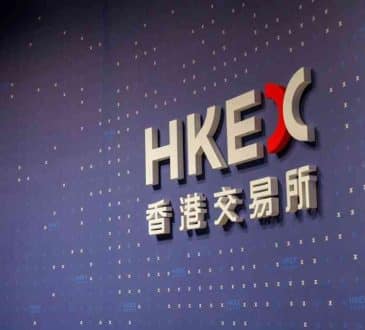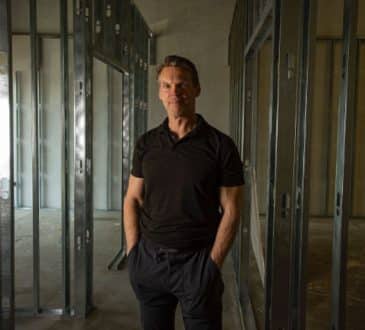Family-Owned Businesses & 5-Structural Keys for Sustained Legacy Success … The Macro ‘Cliff Notes’ to Execution!

Family-owned businesses are and have always been the foundation to a free society’s economic success, and, with this reality also comes the opportunity and challenges of working professionally together when its family and non-family blended together for the organization’s daily operations. Balancing these realities, along with legacy employees expectations, sacred-cows, healthy P&Ls, developing the talent hierarchy for next generation succession, and, exceeding customer’s expectations can be a daunting.
As I work with family-owned business from Berlin to California, from London to Wisconsin, from Toronto to West Virginia and all parts in between, the challenges and opportunities are most often the same.
Managing both the business needs and family talent hierarchy takes finesse, focus and an objective scorecard, and a healthy mindset. In working with incredibly successful family businesses for the past two-decades, among the many considerations, here are a few structural keys to consider:
- Why (aka Purpose) – Don’t assume every member of the family or the heir apparent wants to even continue in the family business. While this can be heartbreaking for the elder generations, keep in mind that your business, may not be their business. Ensure that you are having fair, objective, non-pressured discussions to explore if your businesses values and purpose, your personal values and purpose, are aligned with next generation potential key player(s) and next generation emerging leader’s desires, values and purpose? Be fair and have extensive, prolonged unchallenged discussions of whether next-generation family members even want to be involved passively or actively in the family-business, and at what levels – not everyone wants to be in the C-Suite, so explore roles and ownership in those instances.
- Then, explore the WHY even deeper for anyone that does want to be involved in the family business. Ensure they understand the work, commitment and microscope that they will be reviewed through by those inside the organization and outside. It should always be “MERIT/COMPETENCY” driven, if you really want the business to be sustained and thrive!
Identify upfront, who’s responsible for the process of on-boarding and the immersion of family members? What role/roles and ascension TRAJECTORY expectations are expected or sought on both parties’ side … And, make sure everyone understands the time line expectations on all sides – This can be trauma point at a later date if note addressed early on in the success talent hierarchy line.
- Clearly Defined LANES – This is critical in any organization, and especially critical in family businesses. When family is involved and escalated when each has an ownership stake, everyone may feel genuinely compelled to voice views and insert themselves into every action, decision, and initiative. Family members many times may have positive intent, yet it can become a nightmare and explosive when everyone feels compelled to cross operational lanes, lines, and responsibilities.
First, here is where and why a clearly defined Organizational Diagram be current, updated routinely and widely circulated so as to inform and educate each to their respective lanes/lines of responsibility and better self and organizational accountability. These positional hierarchy cells and lines, must have as appropriate clearly defined Key Performance Indicators (KPIs), so as to make it easy to facilitate family and non-family interactions – and avoid hurt egos, eliminate passive-aggressive behaviors and ensure everyone works form the highest level of integrity.
Second, here is where and why a clearly defined Positional/Role/Job Descriptions/Responsibilities be current, updated routinely and widely circulated so as to inform and educate each to their respective lanes/lines of responsibility and better self and organizational accountability. These should have clearly defined Tasks, Duties, Responsibilities (TDRs) that serve as clearly defined KPIs. To ensure individuals are actually growing individually within any given Role on a merit/competency performance-based level and not merely entitlement, benchmark individuals in a Role and the attributed TDRs against the associated Knowledge, Skills and Abilities (KSAs) for achievement in that Role.
- Compensation/Benefits – This area can be very touchy for discussions; This should always be an issue of equity. An individual in any given role, the organization should already have a compensation scale for positions at any level/band. Family-Members should receive commensurate compensation in roles as non-family members are receiving; Now, a family-members ownership equity is an altogether different compensation discussion and not preview to other within an organization … This is always a touchy subject, here are few rules of the road for consideration:
# Do a compensation analysis with your payroll firm/staff/CPA
# Run a comparative salary via on-line dashboards, such as salary.com
# Evaluate the benefits/perks package as it would be offered to a non-family member in a same role/position
# Milestone accomplishments/achievements tied to bonus structure opportunitiesThink and reflect upon compensation from the time perspective of, Immediate – Intermediate – Long-Term needs and expectations of all parties concerned.
- Succession/Promotion/Score-Card – This must be from day one (on-boarding) a structured and earned process, competency is critical to succession success; Within a family owned or operated business, there may be a need to fast track an individual, but be cognoscente of not rushing a process that will actually set a family member up for catastrophic failure down the road – and that can mean trauma to employees, customers and the life of the organization. Many family-owned businesses, like non-family-owned businesses, may create a management development track with a rotational component to move a key next generation family member throughout the organization, to provide them with accurate, quality exposure to and hands-on interaction to all of the business entities and key valuable subject-matter-experts, thereby accelerating their awareness of the larger business and how all the moving parts work. It is important that the score-card be defined and followed throughout this talent life cycle – and adjusted as appropriate!
One powerful example of how many family-owned businesses manage this dynamic, is to require a family member to spend time outside the family business in gainful employment, before coming into the family-business!
While a family member may have grown up within the family business and may have been involved in the family business while in K12 or K16, that the next generation family member will be well served to have spent time in a value-based employment in the private sector, and, in an un-associated business to what market segmentation the family business is in and gain this valuable outside experience. This experience will provide exposure, knowledge, skills and ability development through which they can bring back to the family-owned business to elevate and accelerates its efficiencies and success.
It is critically important to have early on (ideally before day one of employment) determined the time line and gates that the family member in question here meet to advance through. Identify the time lines and deadlines and have agreement of the elder generation family members in roles and positions movement horizontally, vertically and onward (new roles, retirement. Etc.), so the next generation in fact can plan around themselves.
- Performance Reviews & Coaching Feedback – Whether done on the fly as a casual coaching conversation, what many human resource professionals call Coaching Performance Conversations (CPC) or a more structured weekly, monthly or Quarterly documentation interaction exercise, nothing should change here because one is a family member. And, if anything, an increased scrutiny should be expected here for a family member, to ensure objective scorecard analytics hold everyone accountable to the professional sequential development of all parties involved. Keep in mind that there are additional needs to be addressed with a family member.
It is worth re-stating again. Here is where and why a clearly defined Positional/Role/Job Descriptions/Responsibilities be current, updated routinely and widely circulated so as to inform and educate each to their respective lanes/lines of responsibility and better self and organizational accountability. These should have clearly defined Tasks, Duties, Responsibilities (TDRs) that serve as clearly defined KPIs. To ensure individuals are actually growing individually within any given Role on a merit performance-based level and not merely entitlement, benchmark individuals in a Role and the attributed TDRs against the associated Knowledge, Skills and Abilities (KSAs) for achievement in that Role. Now use this instrument for detailed feedback, and ensure even greater narrative annotation of PDPs and PIP against each role or position held for this family member, to ensure we are drilling deeper for growth, development and understanding.
Then, encourage and embrace discussion regularly around this Role and how it connects to their last Role within the family business and their next potential rotational developmental role …
And one key factor for all of the above action items, is to understand the purpose and expectations of the ultimate decision maker(s) in this entire family-owned enterprise – who are the Owners/BOD and what are their intentions, expectations and end-goals?
While there are additional considerations that a family-owned business may consider, these are at the top of the list. Leverage all of these interactions with the next generation family members for their vision of the future, their creativity in how the business may operate in the future and what its environment, culture, deliverables may look like?
Managing both the business needs and family talent hierarchy takes finesse, focus, diligence, commitment and an objective mindset around a minimum of these 5-Structural Keys for Sustained Legacy Success … Leveraging your next generation talent as a strategic asset and creates an atmosphere or culture whereby the new family member understands their place and role within the talent hierarch of today and tomorrow, and affords them the insight and understanding of what has really made the family business so great to date. And, this affords them the unique advantage point of understanding what may not work tomorrow and that they own bringing new, innovative DNA to the family business of the future.
Family-owned businesses are and have always been the foundation to a free society’s economic success. Getting this right will powerfully impact culture, coworker integrity, respect from all constituent’s, generating sustained or increased ownership and buy-in by all to ensure the family-owned business continues as a healthy enterprise for the next generation.
Add CEOWORLD magazine to your Google News feed.
Follow CEOWORLD magazine headlines on: Google News, LinkedIn, Twitter, and Facebook.
This report/news/ranking/statistics has been prepared only for general guidance on matters of interest and does not constitute professional advice. You should not act upon the information contained in this publication without obtaining specific professional advice. No representation or warranty (express or implied) is given as to the accuracy or completeness of the information contained in this publication, and, to the extent permitted by law, CEOWORLD magazine does not accept or assume any liability, responsibility or duty of care for any consequences of you or anyone else acting, or refraining to act, in reliance on the information contained in this publication or for any decision based on it.
Copyright 2024 The CEOWORLD magazine. All rights reserved. This material (and any extract from it) must not be copied, redistributed or placed on any website, without CEOWORLD magazine' prior written consent. For media queries, please contact: info@ceoworld.biz
SUBSCRIBE NEWSLETTER








